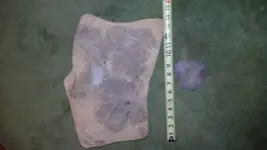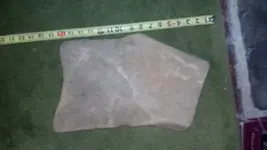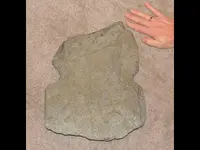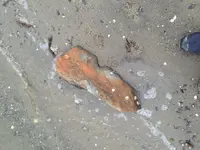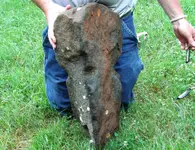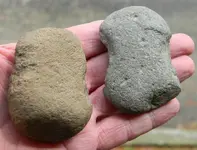Looking at the 2nd photo, I can see where a small notch exists, on the lower side that may have been produced by man. The other or top edge is less obvious, kinda blurry image, not sure if there is minimum work showing there. Here are 2 found on a bay shore which could have served either purpose mentioned. 29 pounds and 80 pounds respectively. 2nd one has 3 notches, the third is facing the viewer in 3rd photo...
Your photos are a bit blurry. If the archaeologists felt that lower notch were deliberate, the stone probably could have serviced as a net weight, lying flat on shore with other weights. But not as a boat anchor, as one would need deep notches to keep it from falling off any lashing. I have found typical small "net or notched weights" with very minimal notching, just enough to remove a smooth surface so the lashing doesn't slip. Looking at your first photo, if the small notch of the right side is deliberate by man, and the other side a natural indentation in the shape, it might have served as a large weight with absolute minimal modification by man. I would say the archy's had the advantage of seeing the stone clearly in person, these photos are pretty blurry. I would not dismiss their opinion if that small notch is man made, which I suspect it is, it might have been a quickly altered large flat rock that might work as a shore placed net weight. Just my 2 cents from having found scores of notched weights of all sizes, many showing minimal modification. The big ones I show here, however, are more obvious....

